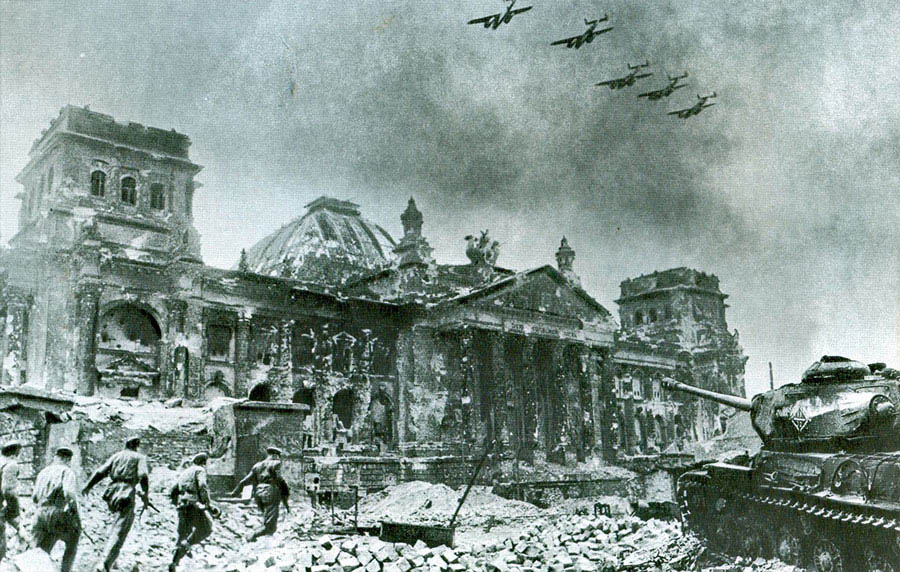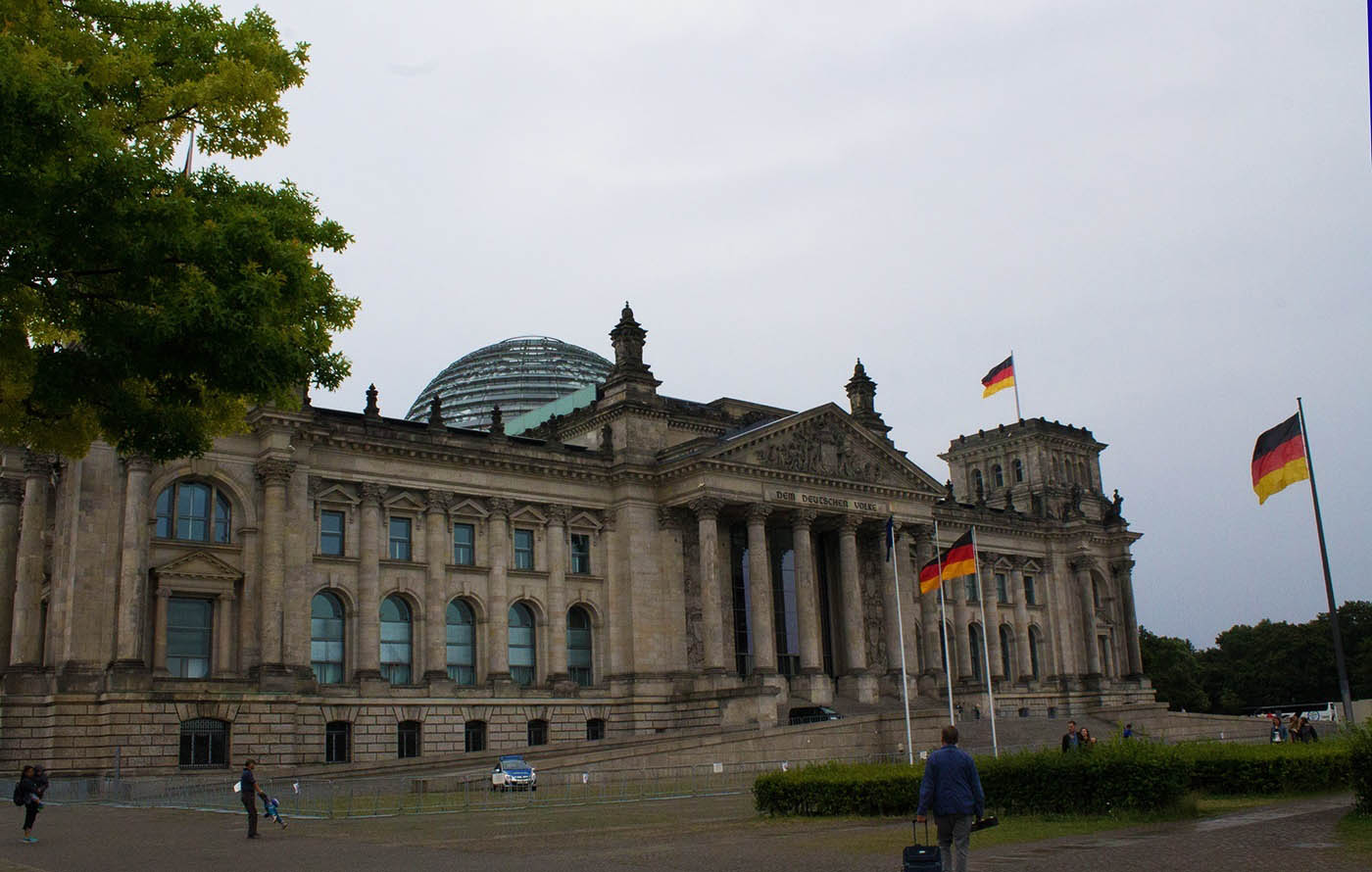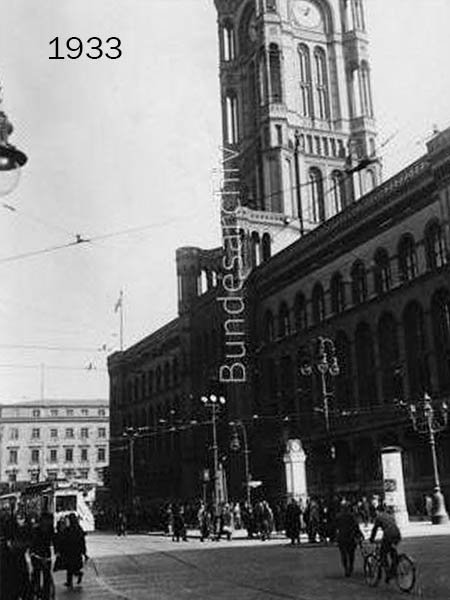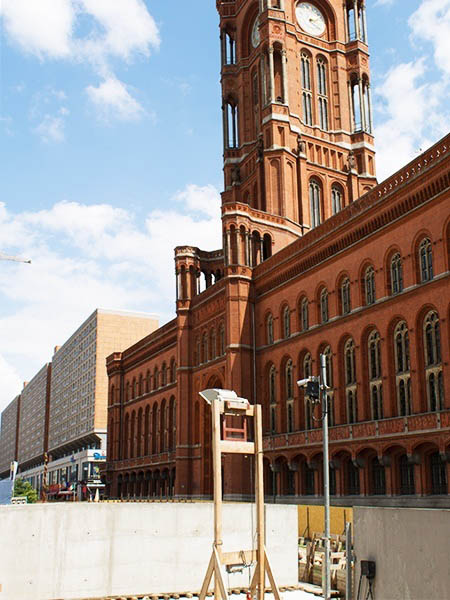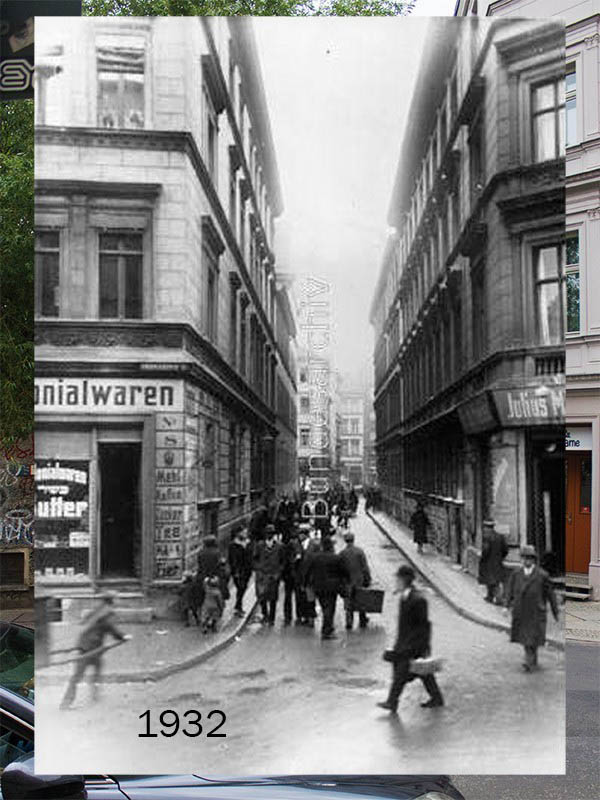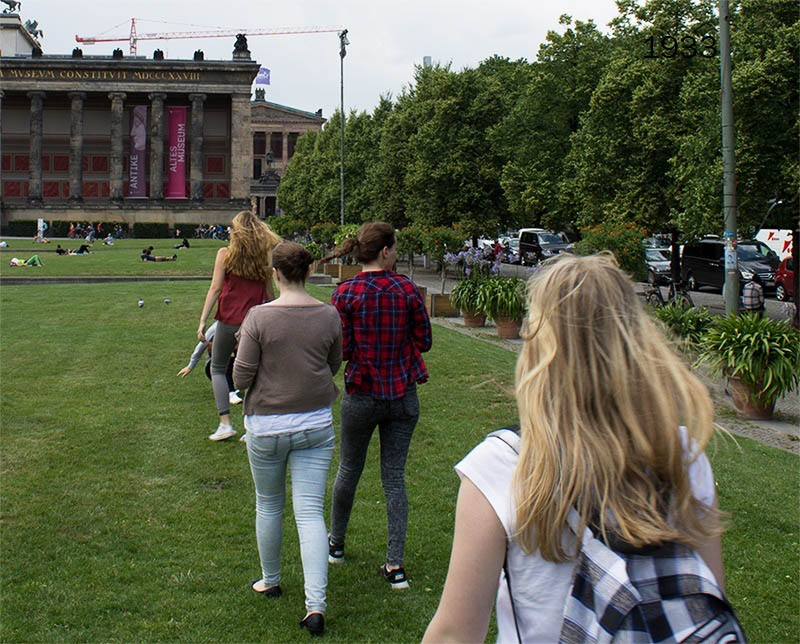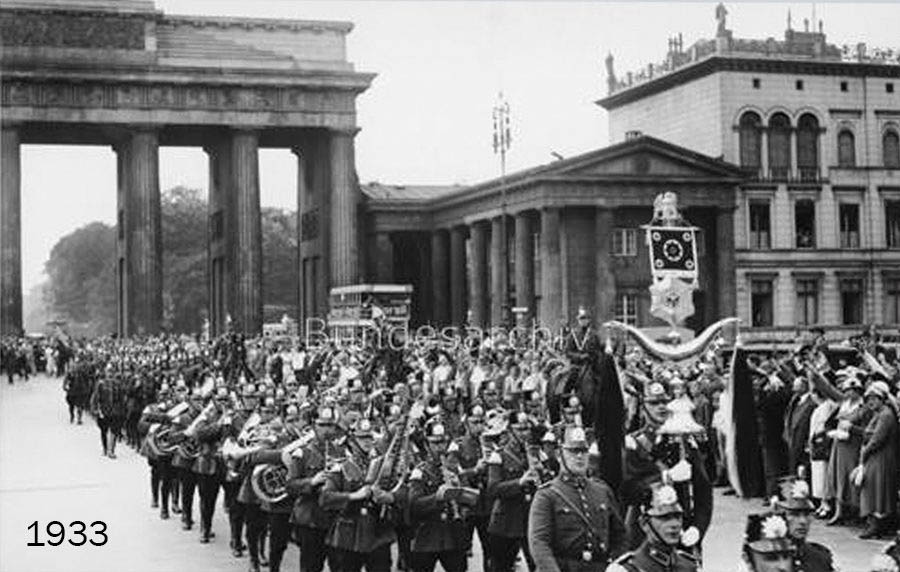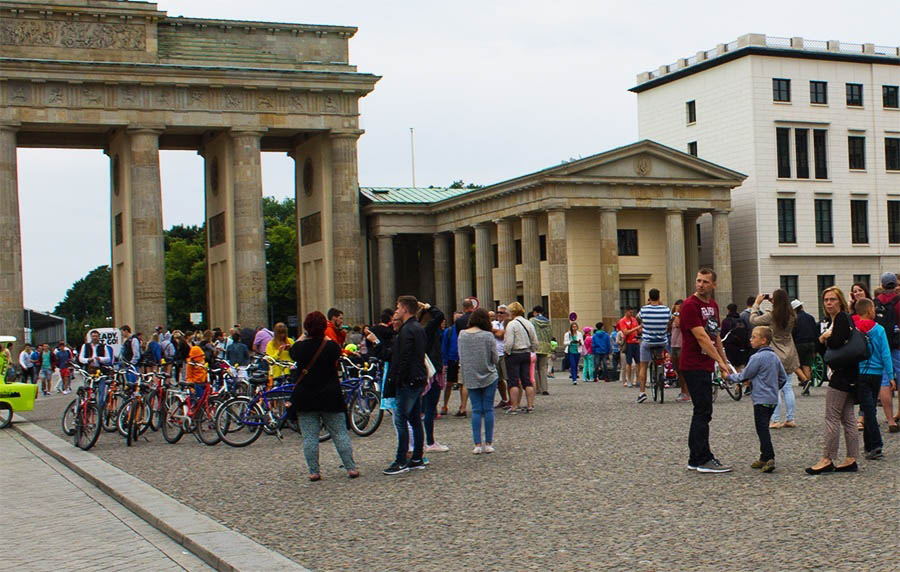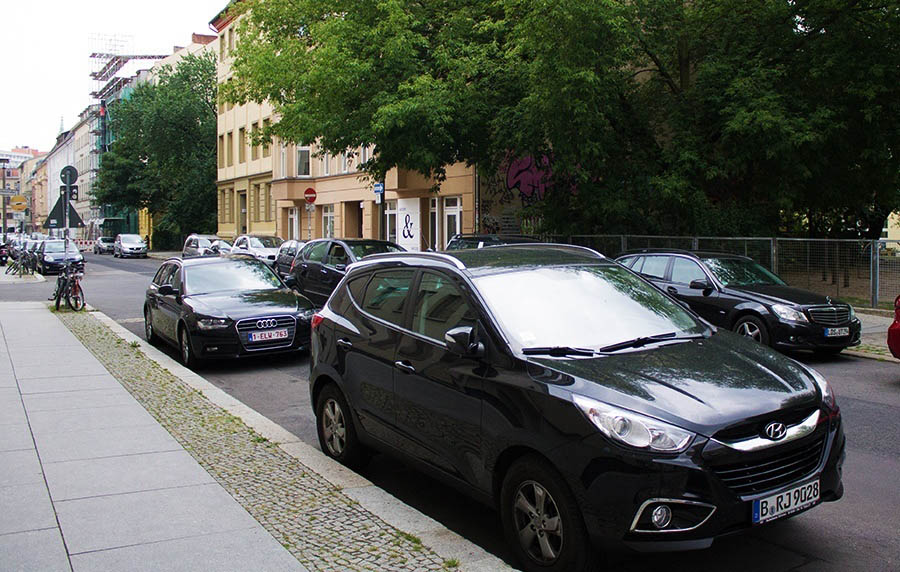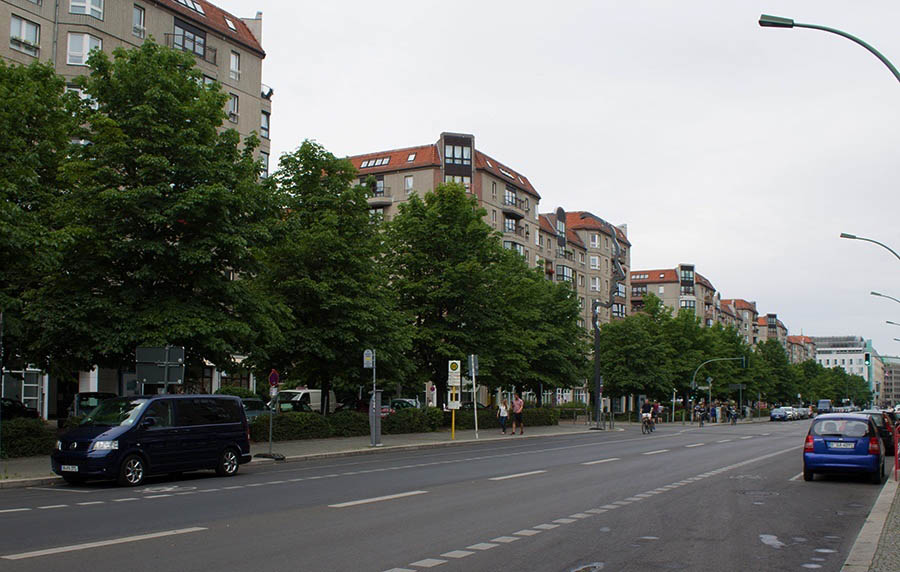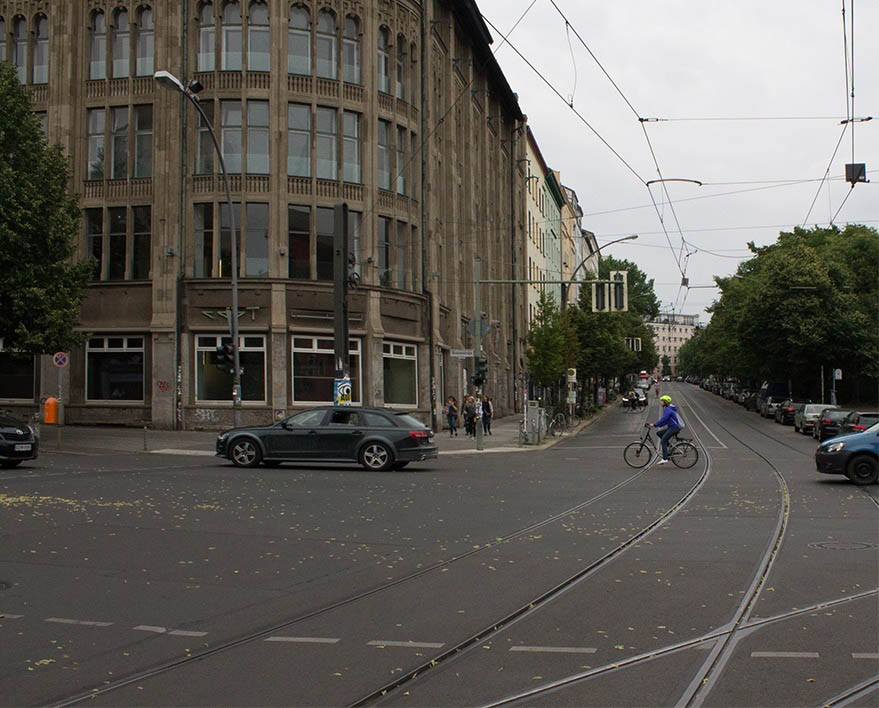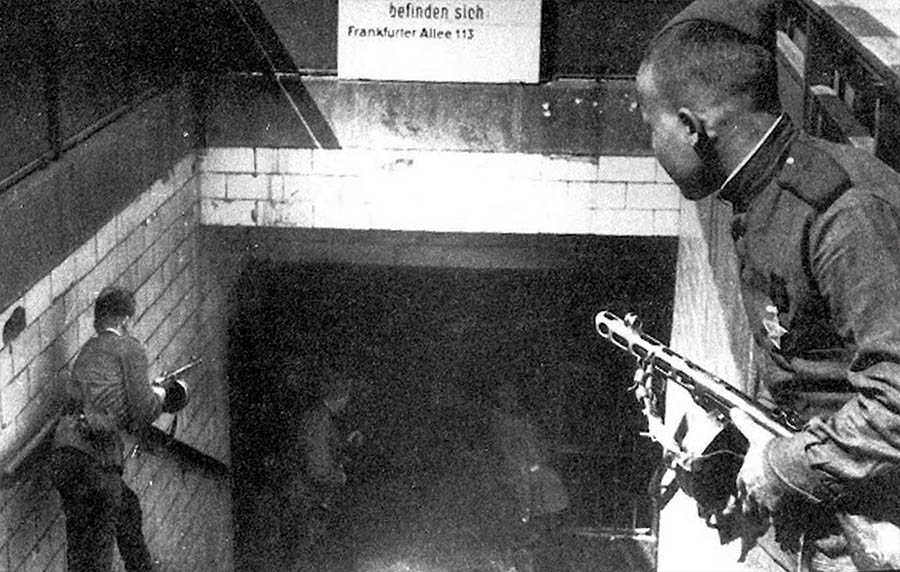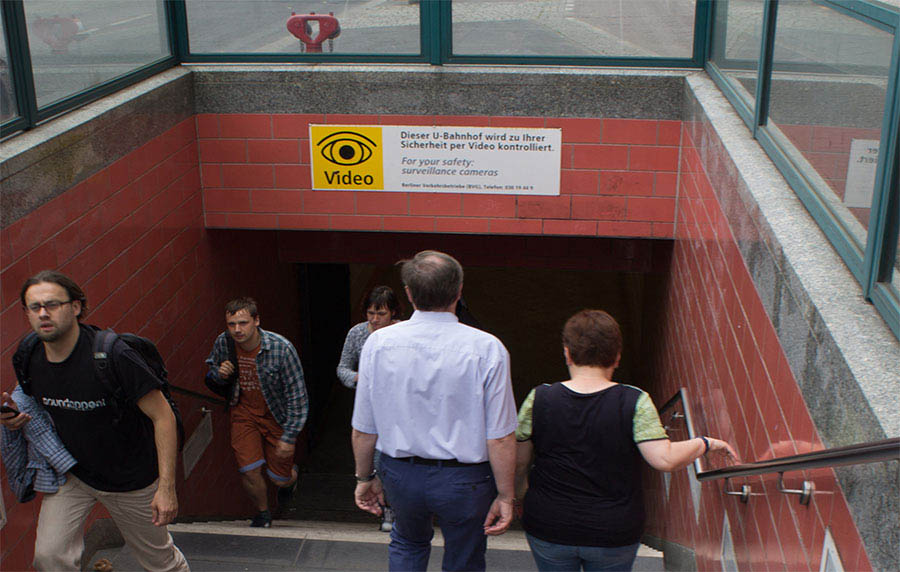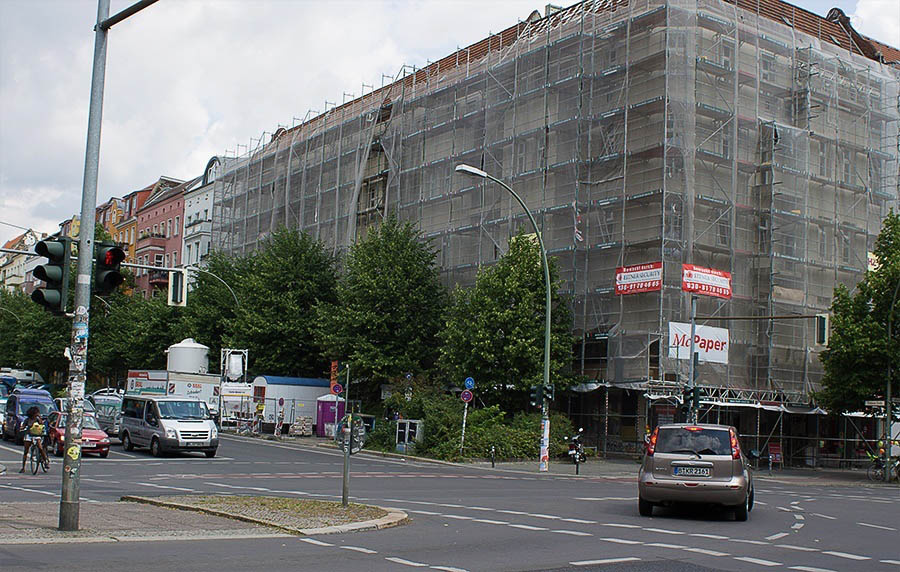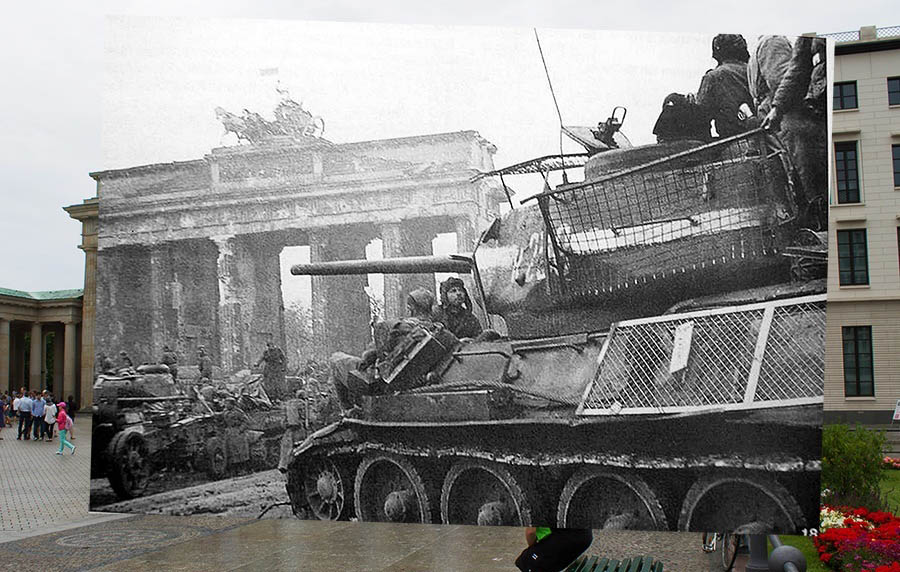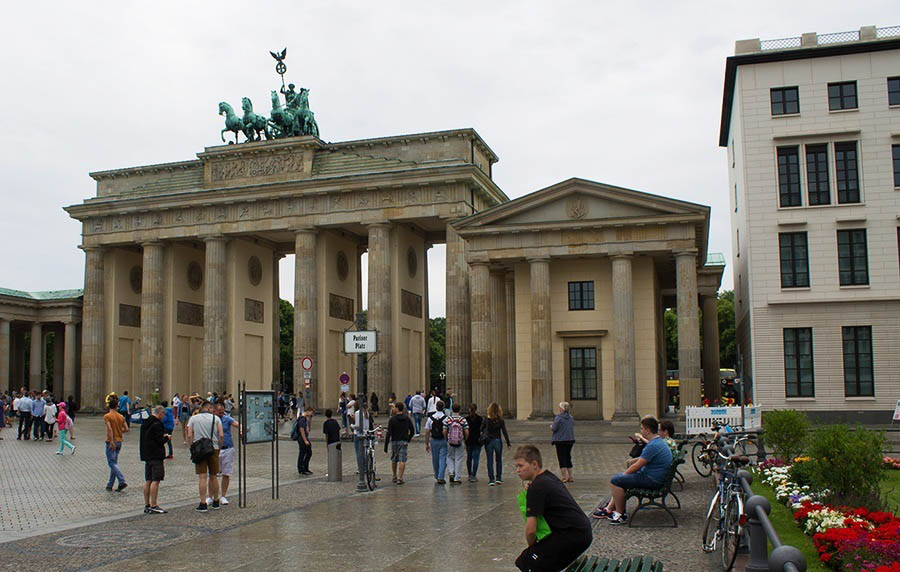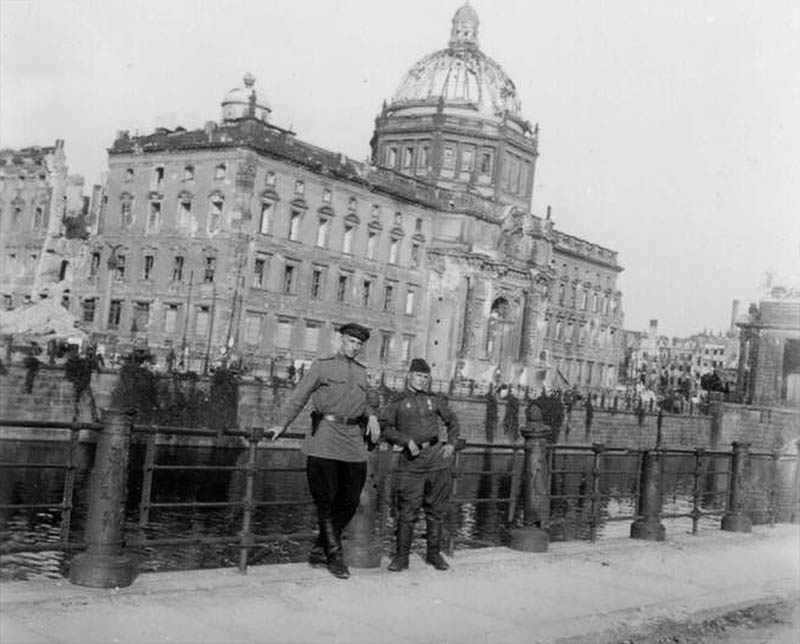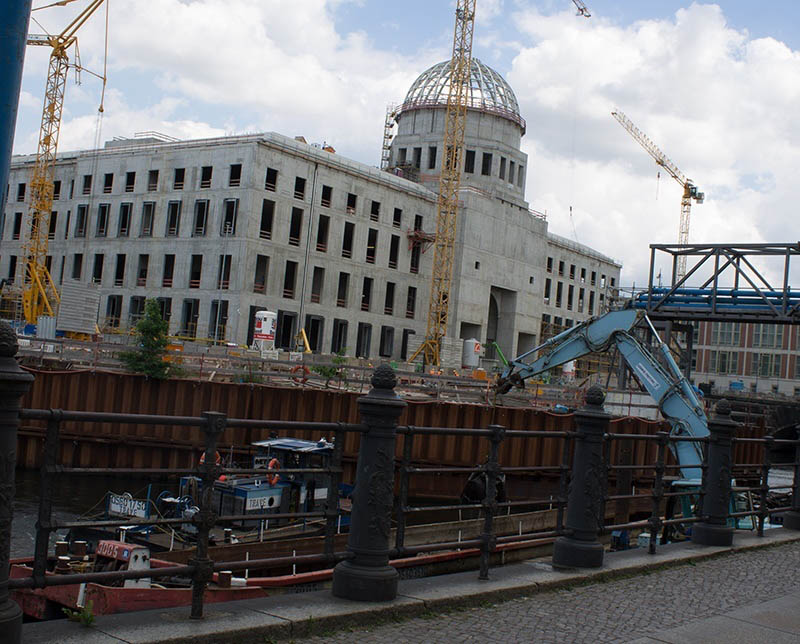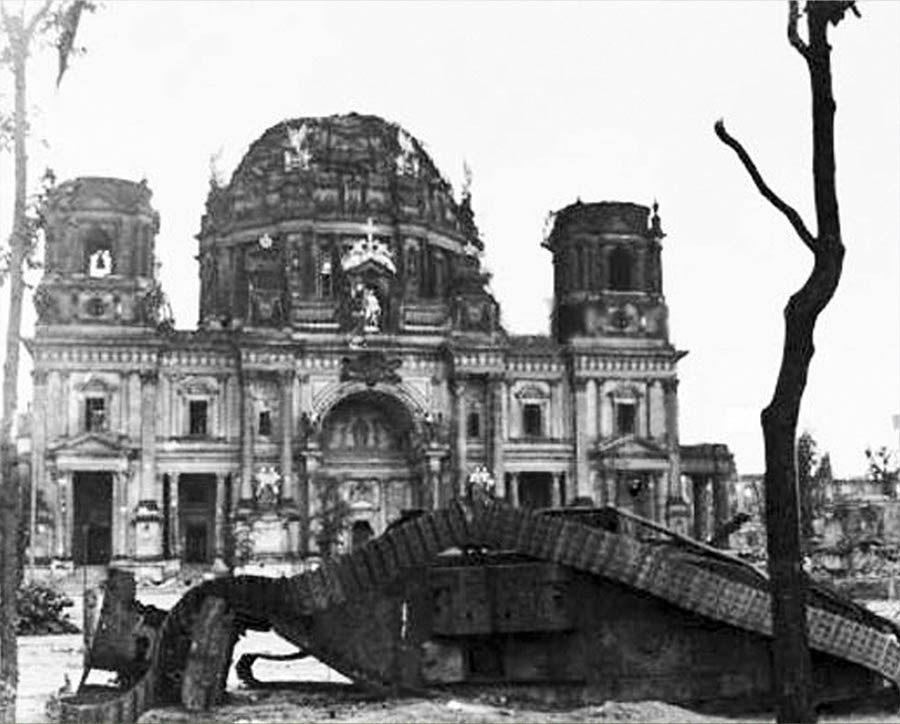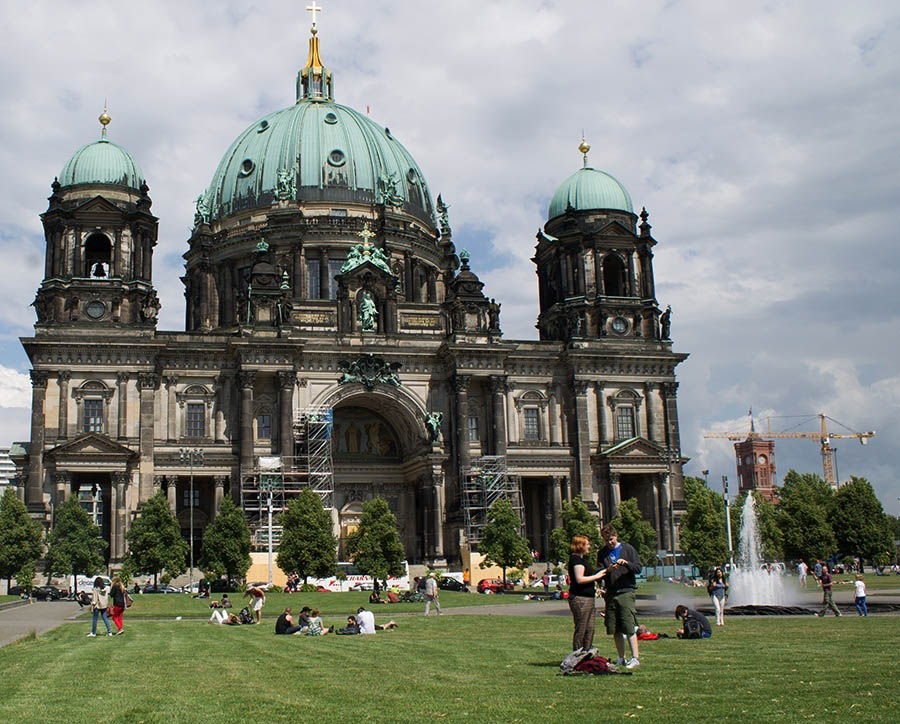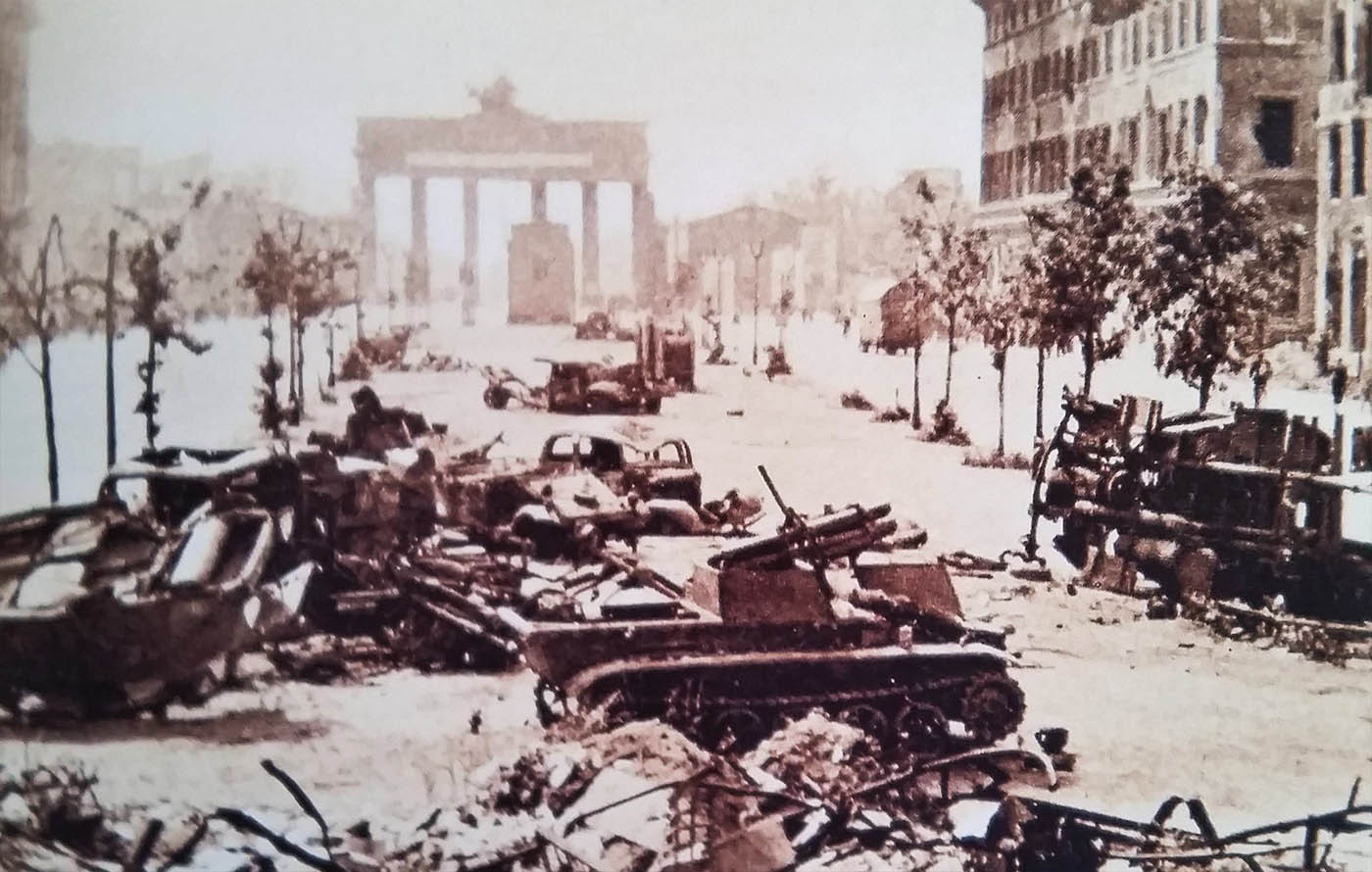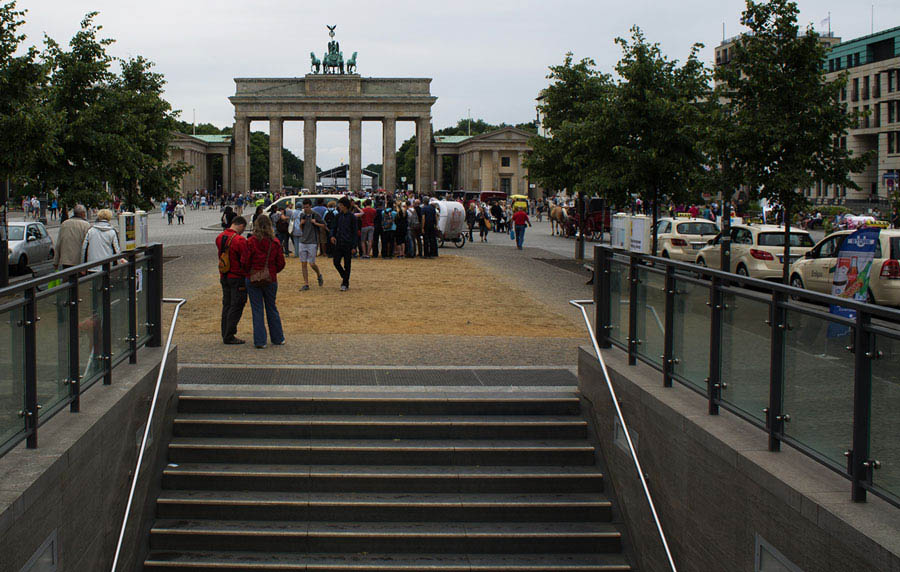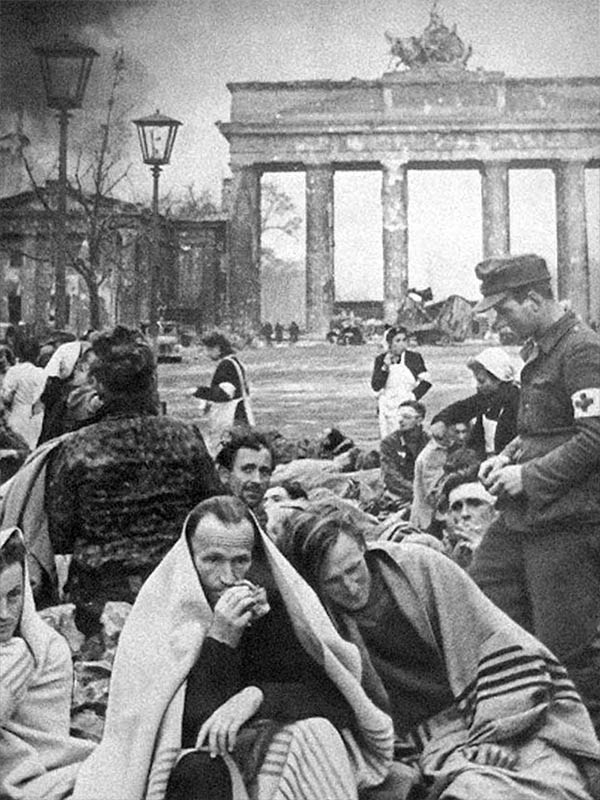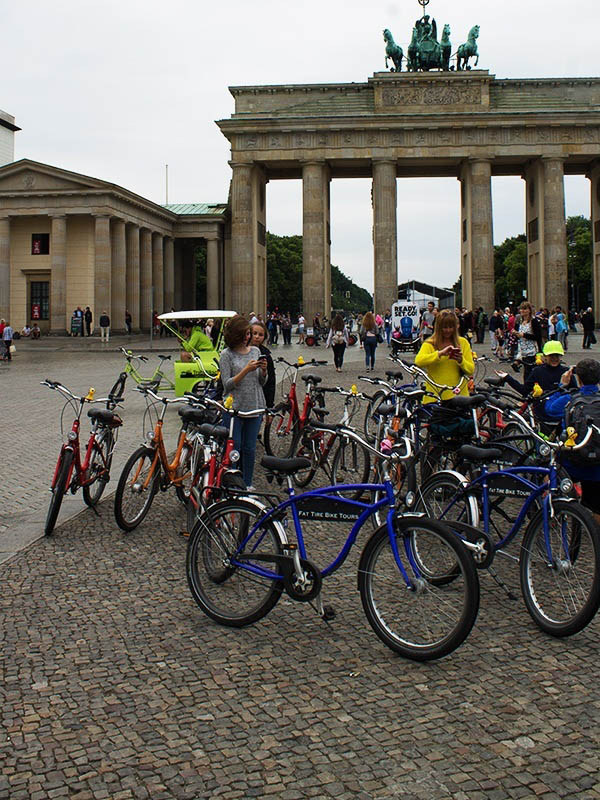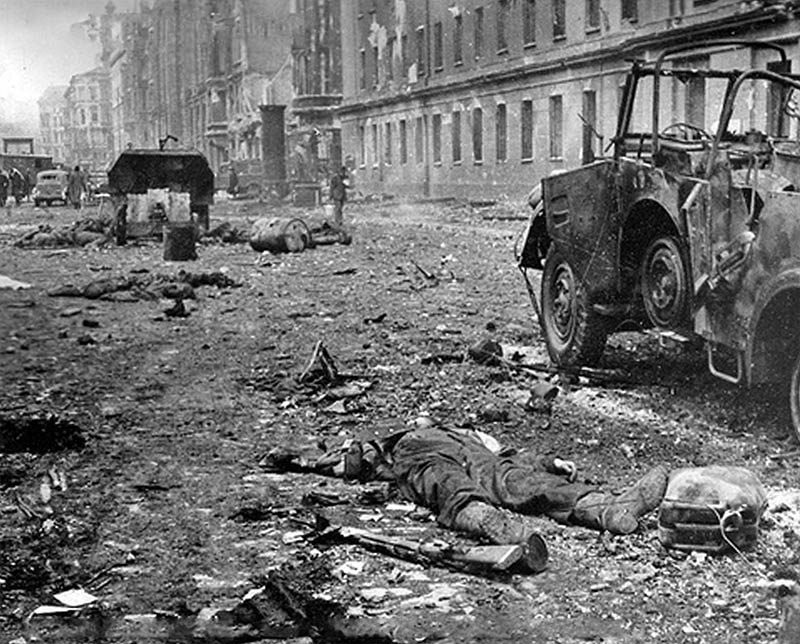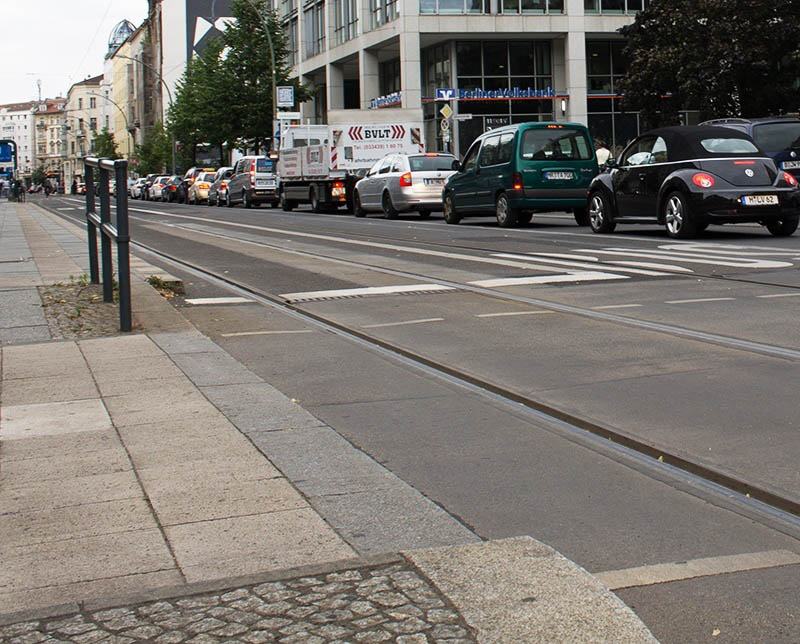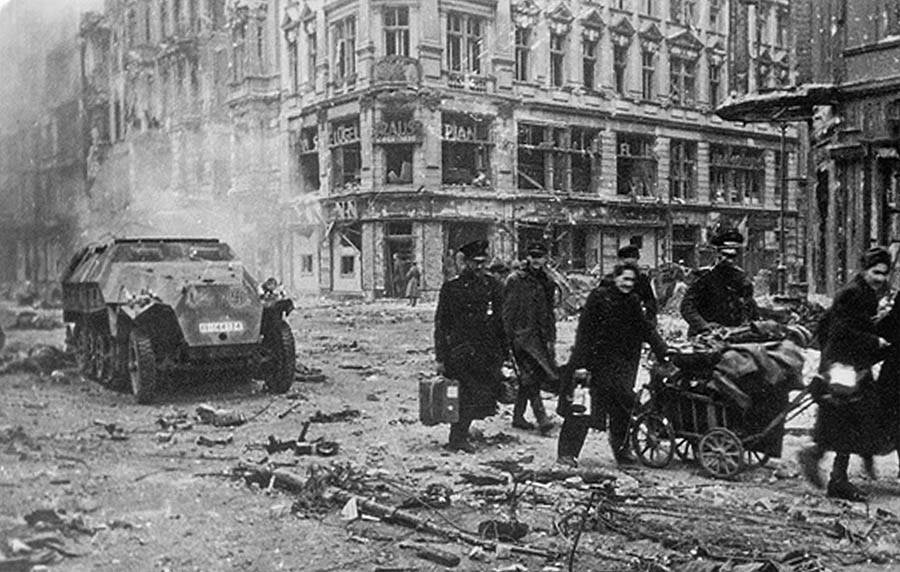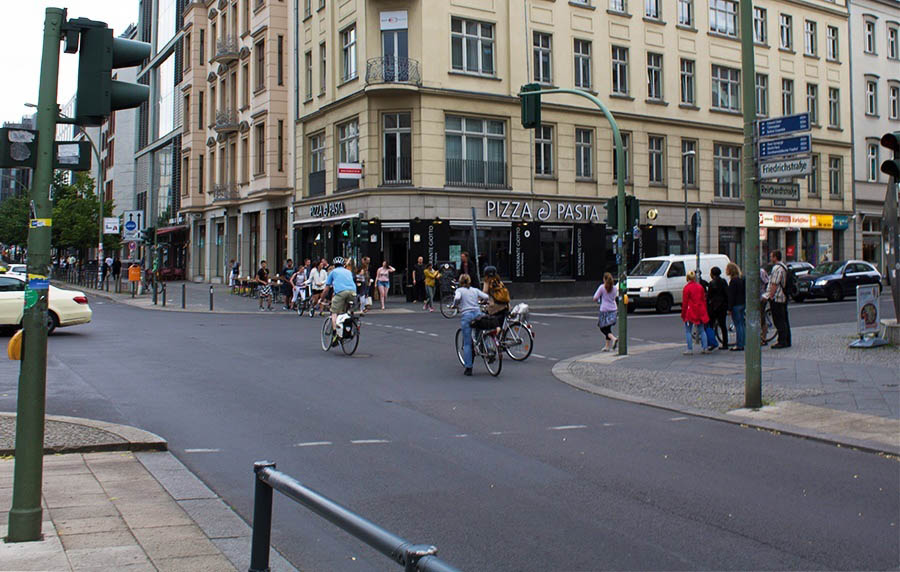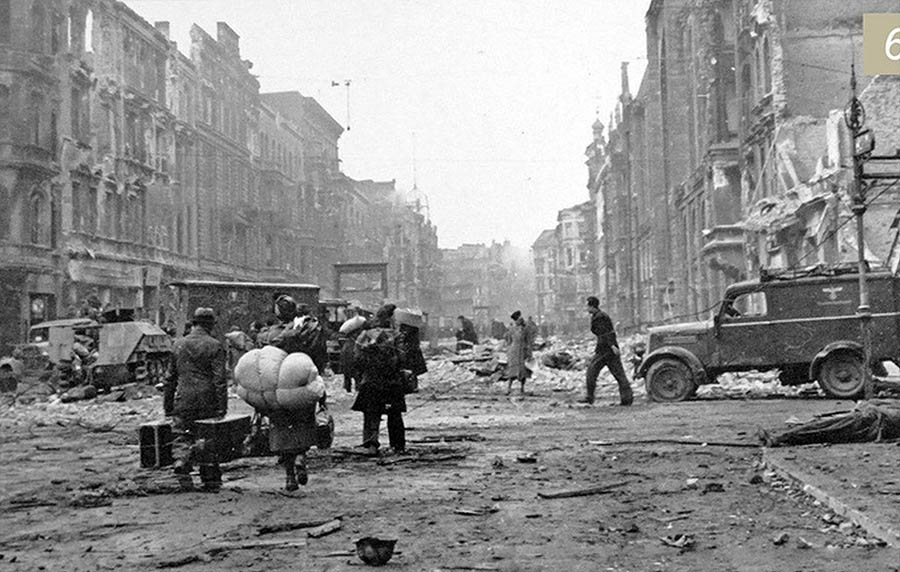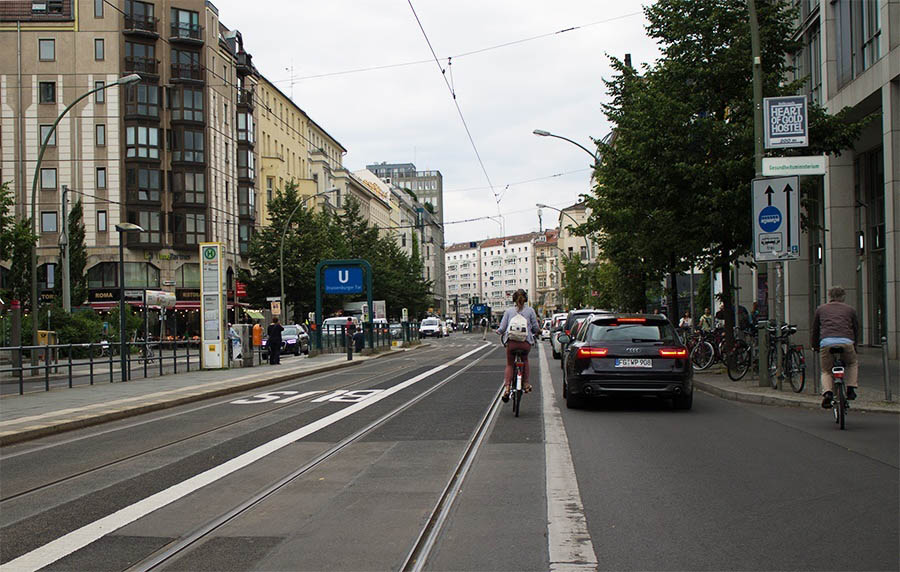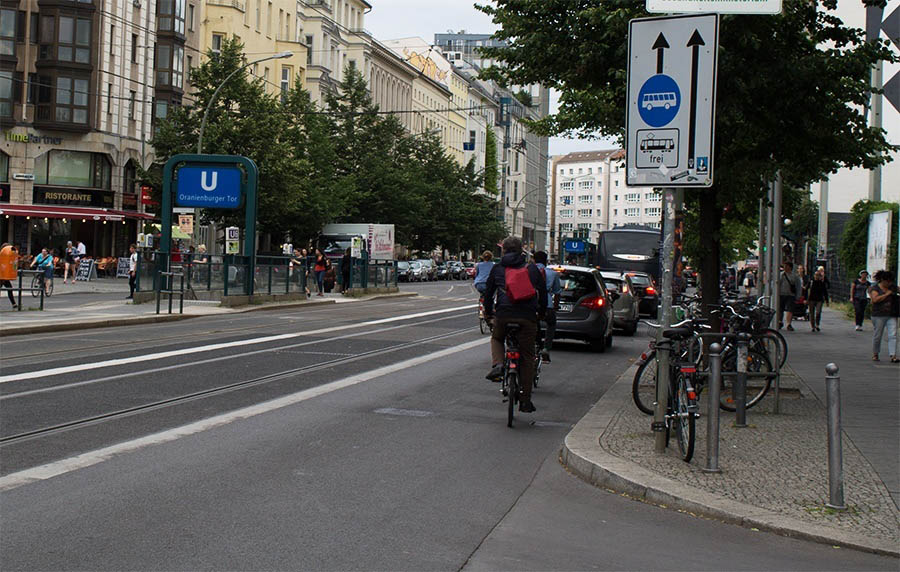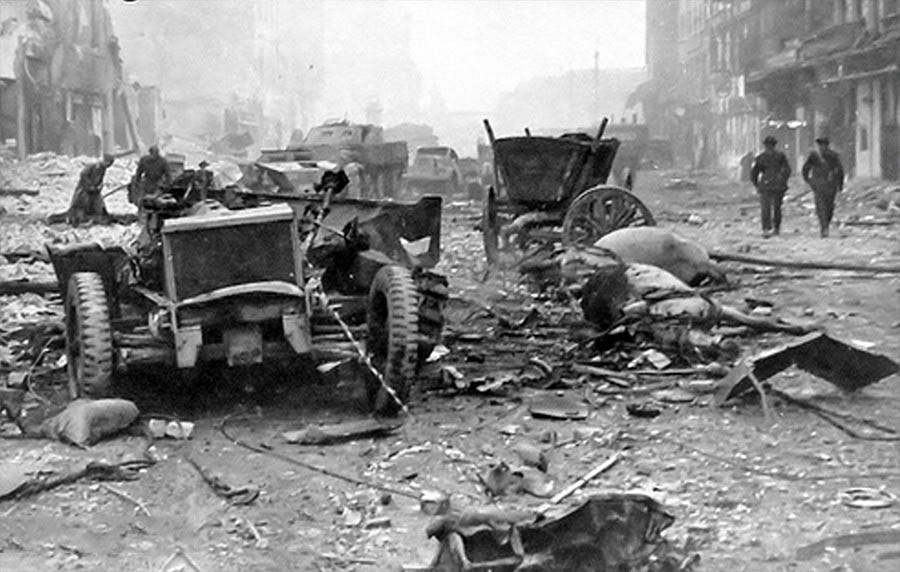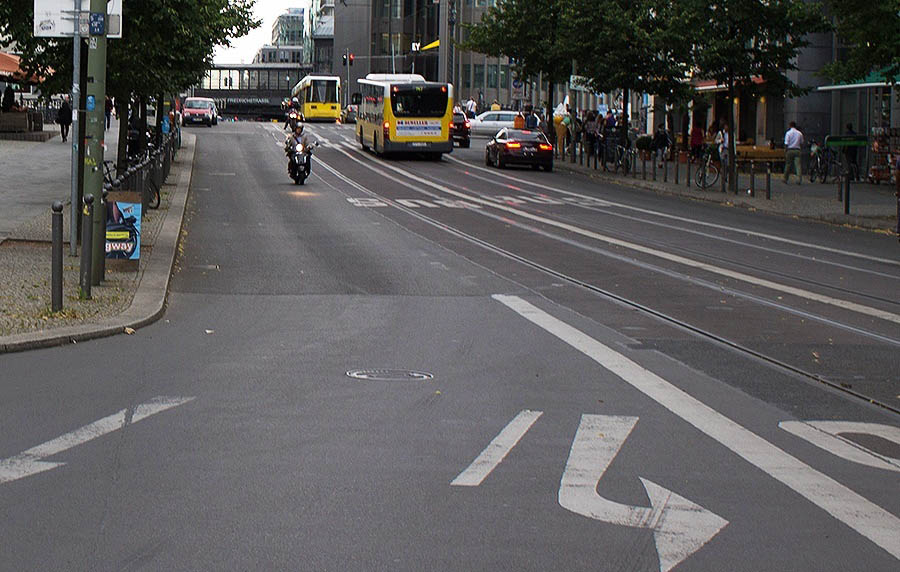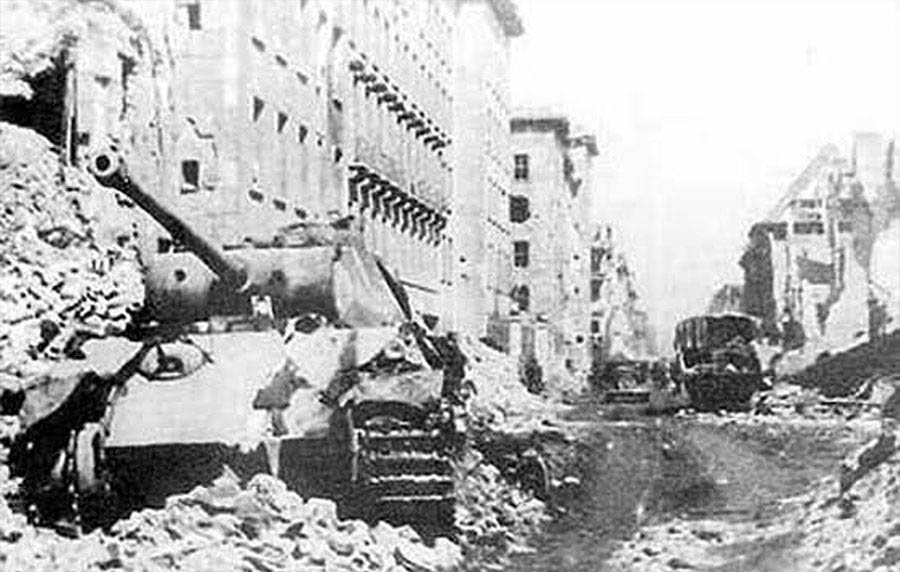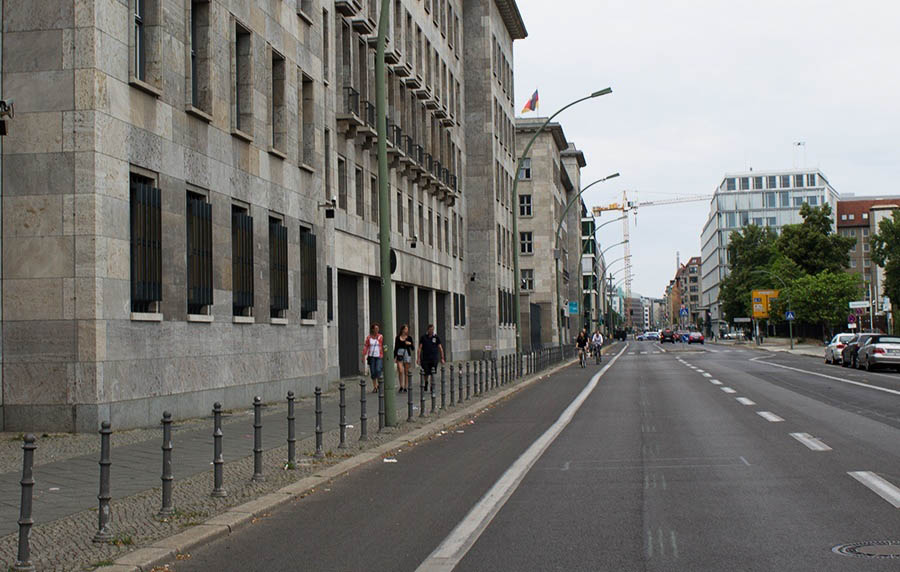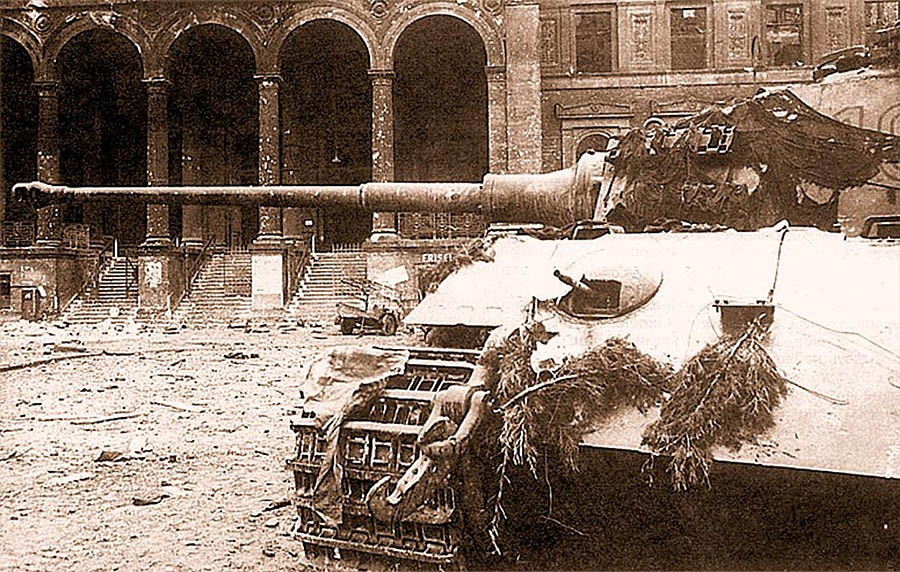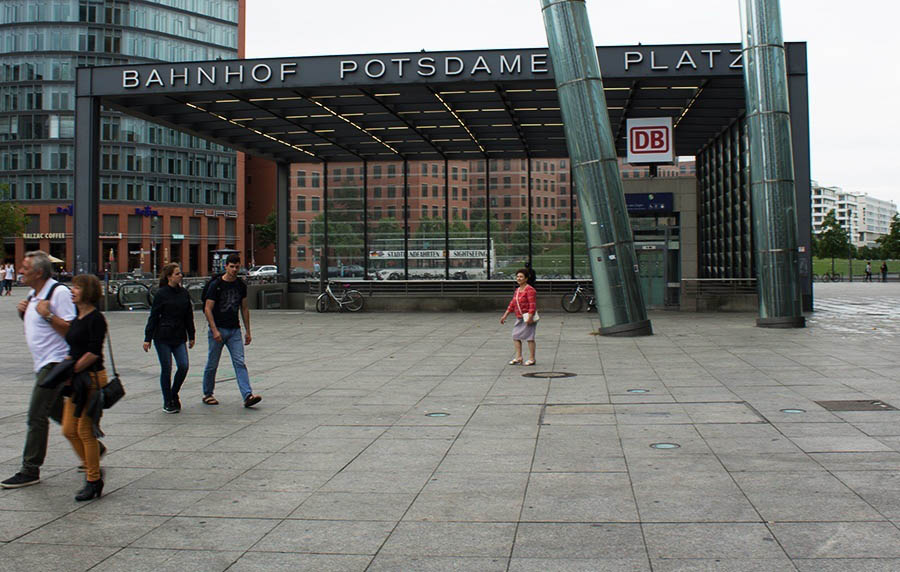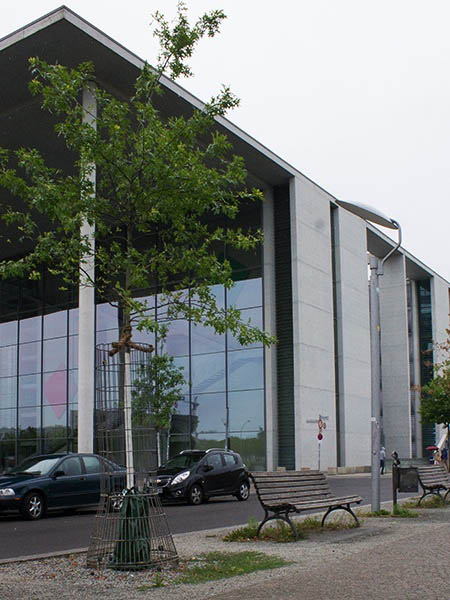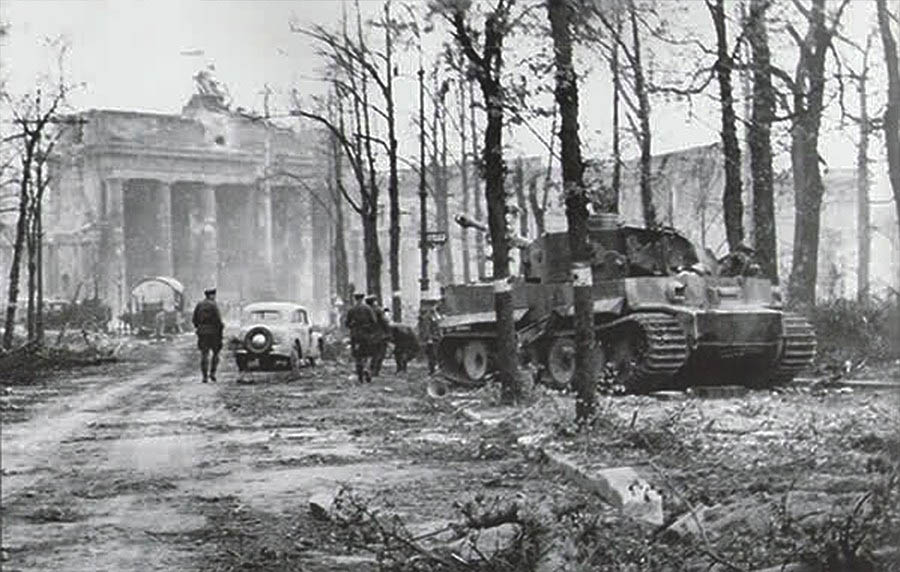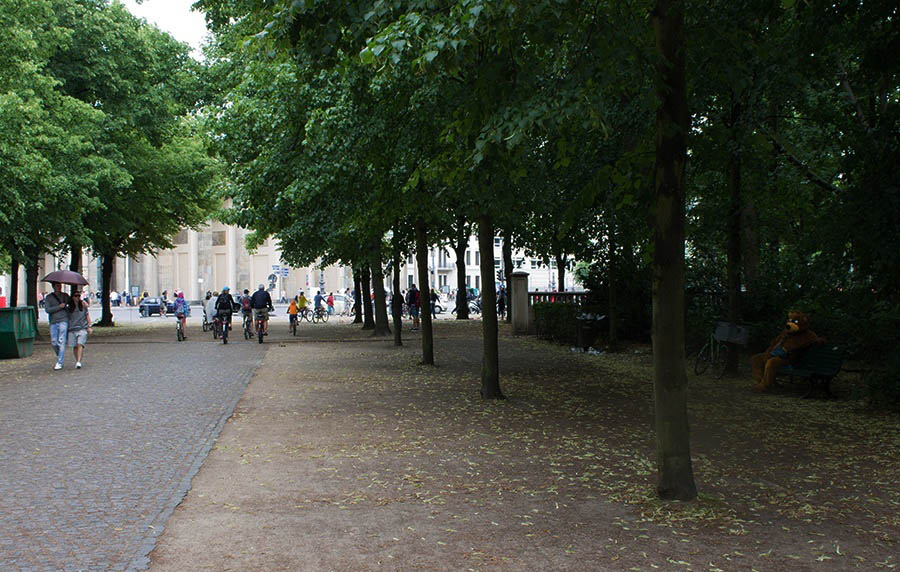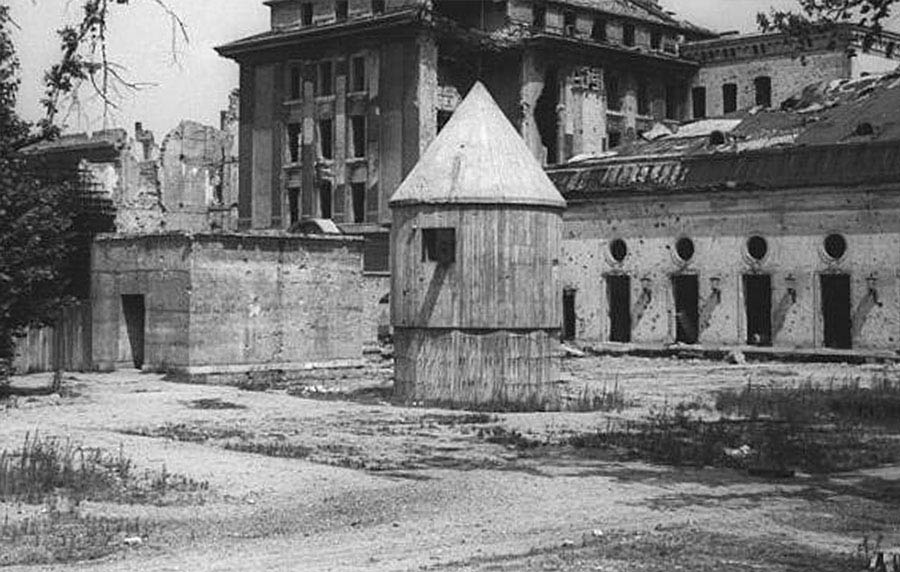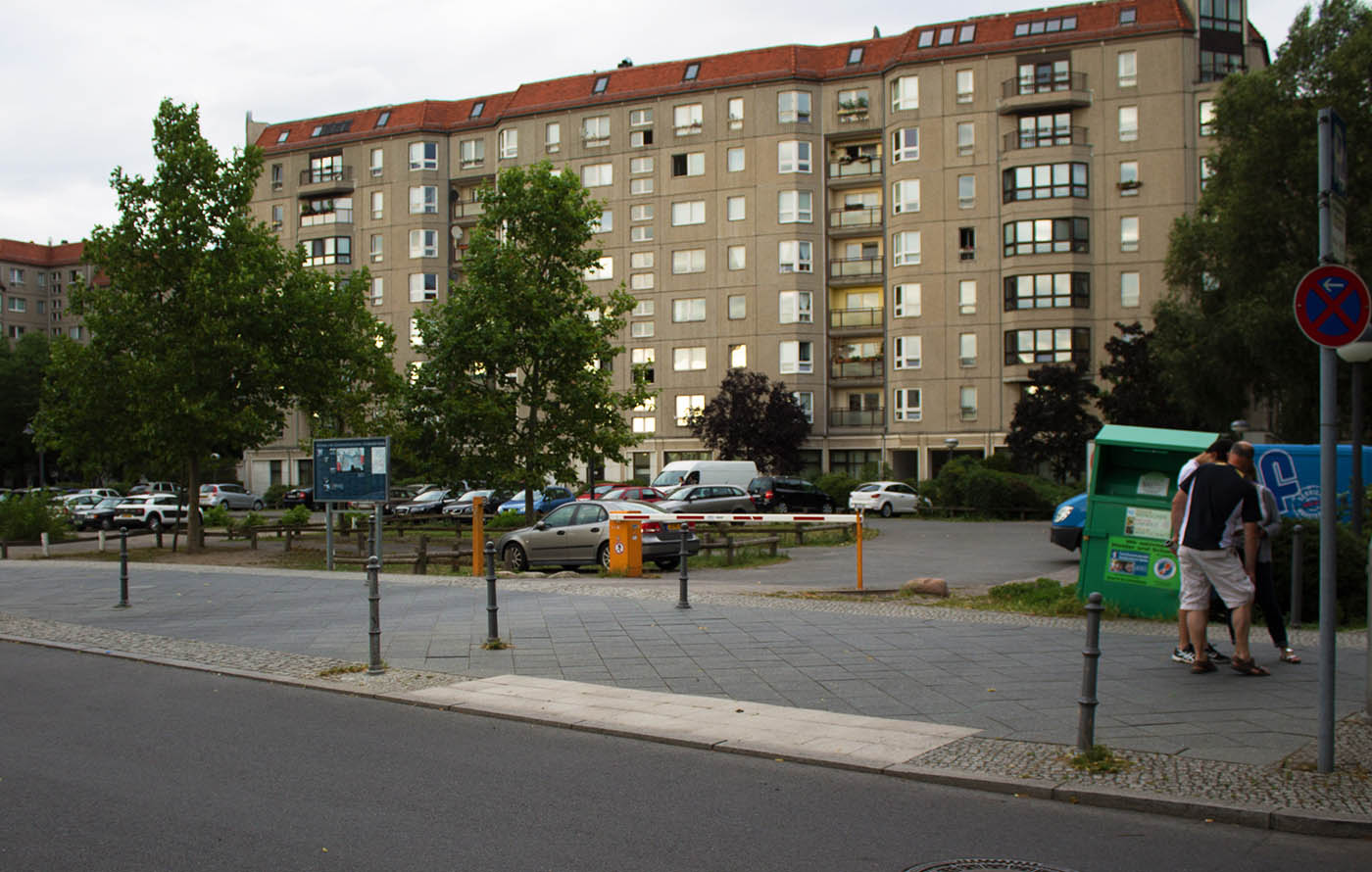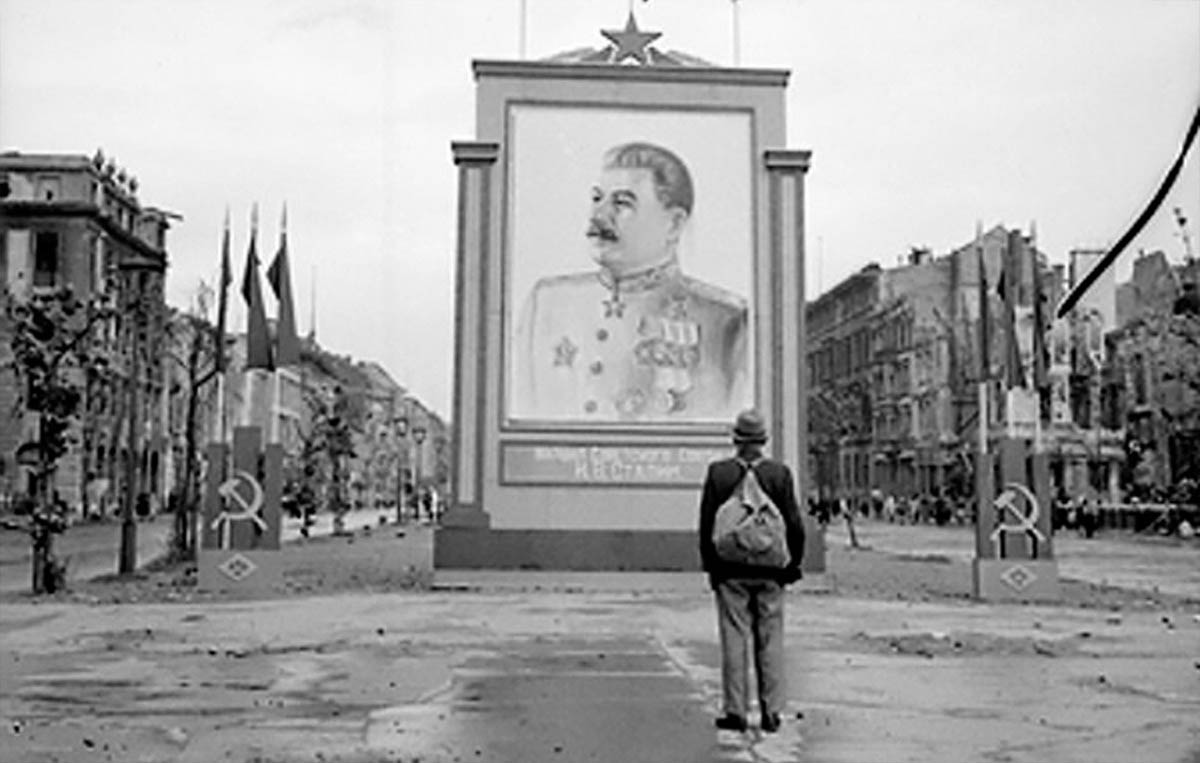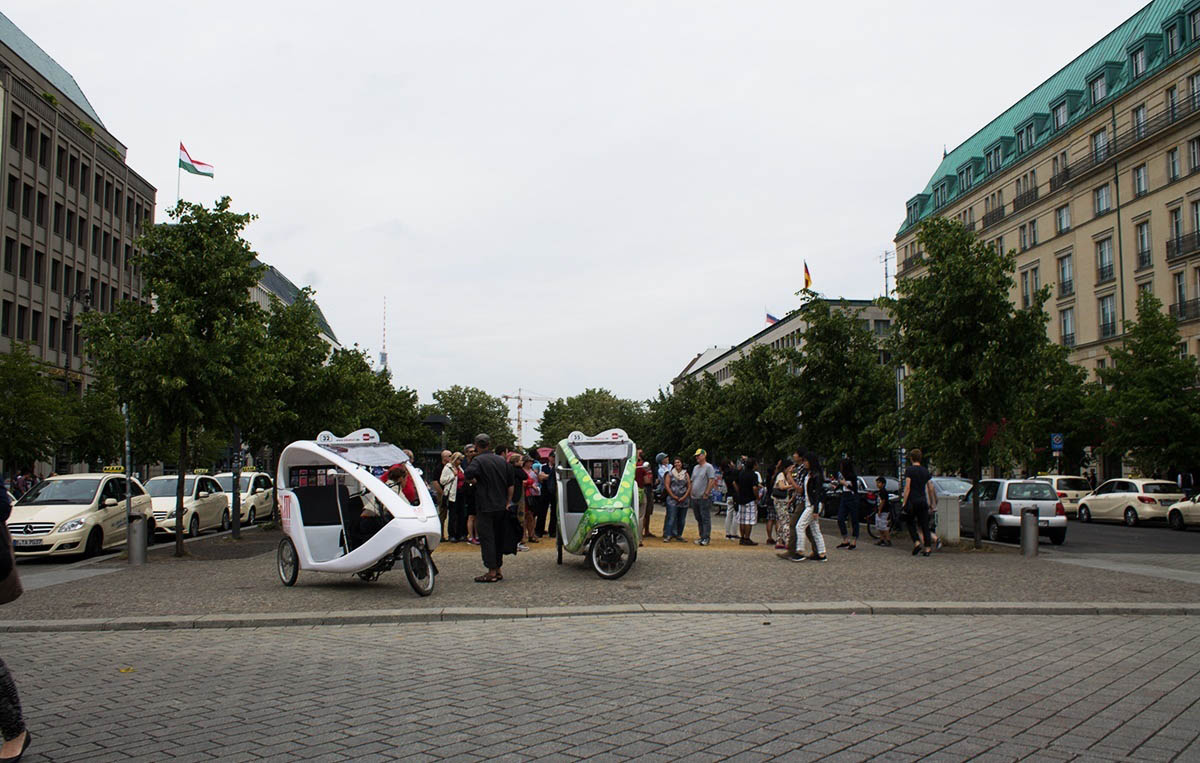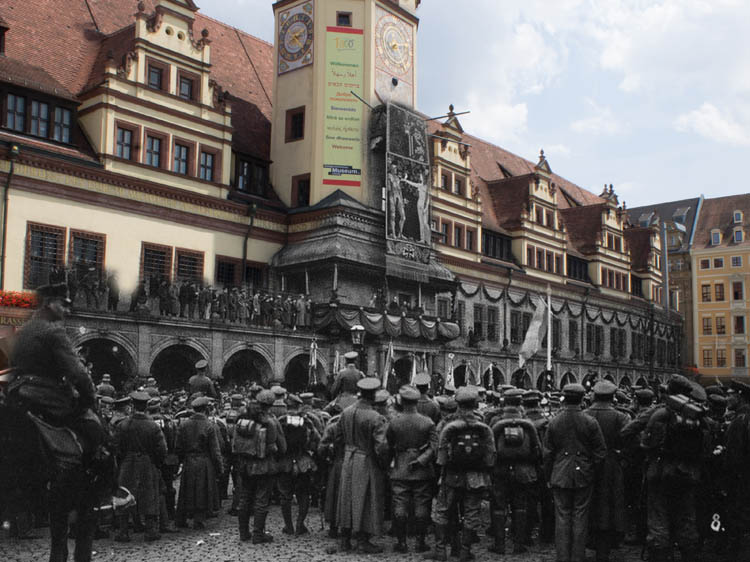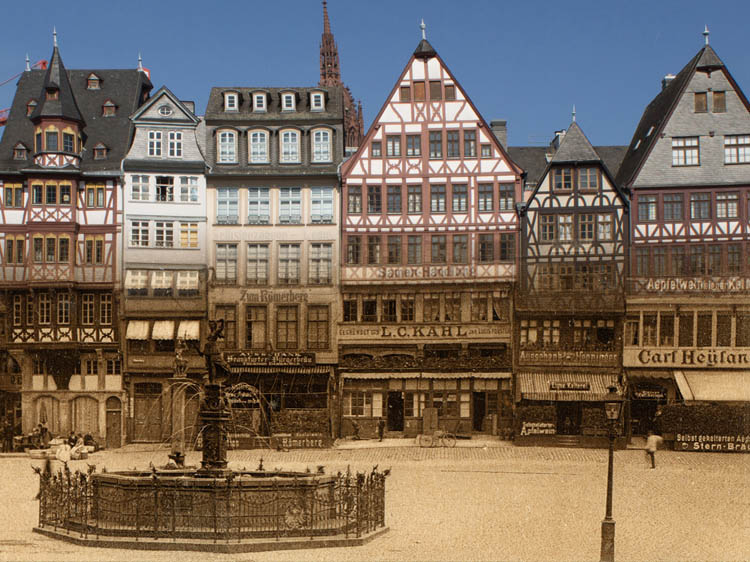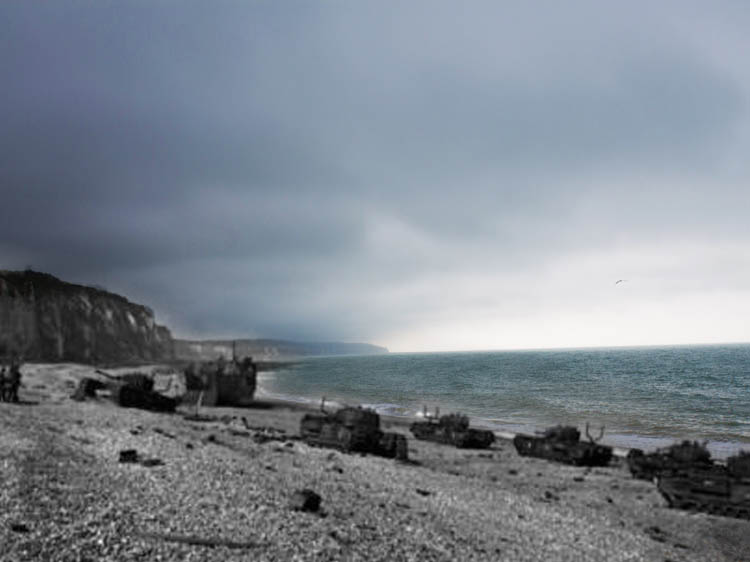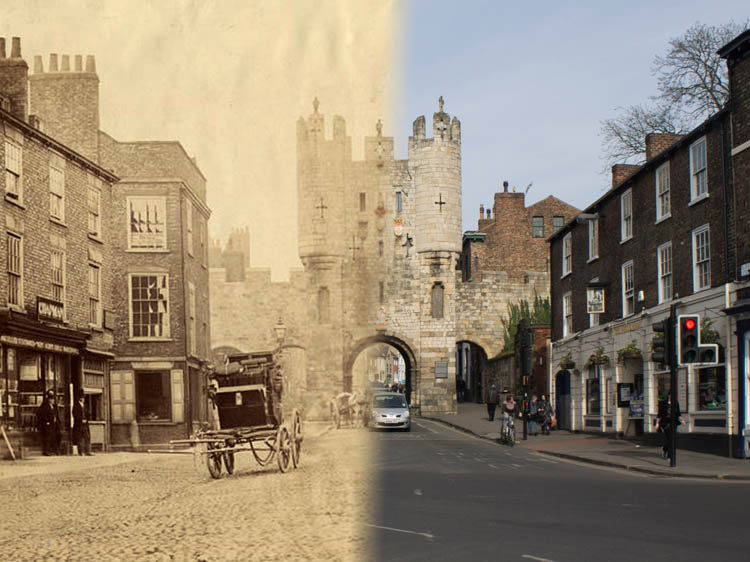Partner City
Berlin
The Nazi Rise and Fall
As Germany's capital Berlin became the heart of the Nazi state, and was also the site of its ultimate destruction in 1945. This photo essay will examine Berlin during the Nazi-era beginning in 1933, and go on to take an in-depth look at the Battle of Berlin in 1945 and see how the city today has rebounded from fascism, bombing, street fighting and communist rule. I visited Berlin for two weeks in the summer of 2015 and the Now photos. While scars from the past are everywhere, from the Holocaust memorial to bullet holes in buildings and the remains of the Berlin Wall, today the city is a diverse and lively metropolis, and certainly one of the most fun places to be in the world.
Explore
Berlin
Then and Now Photos
Fall of the Reichstag
1945
In a formidable display of military might, Soviet tanks, troops and aircraft converge on the Reichstag in the heart of Berlin. For the Soviets the capture of the Reichstag symbolized the destruction of the Nazi state and the end of the Second World War in Europe. The Nazis resisted to the end, ensuring the almost complete destruction of the city in two weeks of brutal house-to-house fighting in April 1945.
The Rathaus
1933
Berlin's Rathaus in the 1930s, seat of Berlin's government. A cosmopolitan city, the Nazis were never particularly popular in Berlin before Hitler rose to power, yet the Nazis would dramatically reshape the city during their 12 years in power.
Schendelgasse
1932
A typical street in cosmpolitan Berlin in the early 1930s, this in the Jewish Quarter. We are looking down the Grenadier Schendelgasse towards the old Schonhauser Strasse. The building at right remains but most of the rest of the district was so thoroughly destroyed in the war that little evidence remains of this busy street. The main exception are the stumbling blocks, little raised paving stones placed in front of the former homes of Jews who were exterminated by the Nazis.
Hitler Youth Rally
1933
The Hitler Youth staging a rally in the Lustgarten in the weeks after Hitler's rise to power in January 1933. In the background is the Altes Museum.
Police Parade
1933
Police stage a march through the Brandenburg Gate, still in their Weimar era uniforms.
Nazi Police Raid
1933
The original caption from the Nazi propaganda service reads "Berlin police and Nazi auxiliary police, search the Berlin Jewish Quarter in the Grenadierstraße and Dragonerstraße after communist leaflets and pesky aliens!" The active persecution of the Jews has begun within months of Hitler's rise to power. This is just a couple houses down from the previous picture of the Jewish Quarter.
Goering's Wedding
1935
Herman Goering, Reichminister of the Luftwaffe and for much of the period Hitler's second in command, celebrates his wedding at Berlin's cathedral, the dom.
Reich Chancellery
1942
Hitler's new Reich Chancellery. Designed by Albert Speer and constructed in less than a year in 1938 and 1939, the Chancellery was a massive building built in the Nazi architectural style that mixed neo-Classicism and brutalism. Completely destroyed by bombing and fighting in 1945, it fell into the Soviet sphere of Berlin and was demolished shortly thereafter. The land was left empty for most of DDR era until the 1980s when the East German government erected up these fairly nondescript housing blocks.
Stug III
April 28, 1905
In the final days of the war the Red Army approached Berlin. Here a Sturmgeschutz III waits for the arrival of the Russians on Invalidenstrasse while troops move into position.
Red Army Enters the Ubahn
1945
Soviet troops with PPSh sub machine guns storm into Berlin. Here they are advancing into an exit at Frankfurter Allee Station to flush out the German defenders. The address in the old photo lets us know that we have the right exit today. The
JS-2 on Proskauer Strasse
1945
A mighty JS-2 (Joseph Stalin) tank takes a break during the advance down Frankfurter Allee, here at Proskauer Strasse. Although some of the buildings have been renovated, the roofline is unmistakable.
Ruined City Palace
1945
Two victorious Soviet soldiers pose for a photo in front of the City Palace, home of the Kaisers overlooking the Spree in the heart of Berlin. Destroyed in the fighting, it was torn down shortly after the war. In 2013 reconstruction began, and it is expected to be completed in 2019 when it will be a museum.
Knocked out WW1 Tanks
1945
In the Götterdämmerung of the Third Reich the Germans threw everything and the kitchen sink into the final battle, including these two World War I era British Mark V tanks hauled out of the Altes Museum (seen in the background) and used it in the city's defense. The results were predictable. Though the story surrounding these anachromisms is murky, historians believe they weren't captured in World War I, but actually captured during the invasion of the Soviet Union in 1941. During the Civil War that gripped Russia from 1918-1921 the British supplied the anti-Bolshevik forces with arms, including the latest in tank technology. The Bolsheviks captured these tanks and put them in a museum celebrating their victory, and when the Germans invaded they captured the museum and hauled the tanks out and brought them to their own museum in Berlin. Then in 1945 they were once again used against the Bolsheviks.
Destroyed WW1 Tanks
1945
Another shot of one of the destroyed Mark V tanks. In the background is the Berlin cathedral. Reconstruction of the bombed out building began in 1975 and still continues today, as you can see from the scaffolding on the building's front.
Wrecked Wehrmacht Equipment
1945
The wreckage of war strewn along the Unter den Linden. The Brandenburg Gate stands in the background. Another example of German desperation is the armoured vehicle in the foreground. It is a Borgward IV, a sort of remote controlled tank that would drop explosives in front of enemy fortifications. They would have been useless in the defensive so they were fitted with a rack of anti-tank rockets, as you can see, and driven at enemy tanks. It is doubtful they had any effect on the JS-2s and T-34/85s.
Stunned Survivors
1945
Dazed civilians receive care from Red Cross personnel in front of the Brandenburg Gate. The juxtaposition with the tourists on bikes looking at their smart phones today is jarring.
Massacred Trying to Escape
1945
With the surrender of Germany mere hours away, a column of desperate Germans, an odd mix of battle-hardened veterans, press-ganged Volksturm, and frantic civilians sought to escape the Soviet encirclement and break out towards the American lines where they could be expect much more lenient treatment. The plan was for a Tiger tank to blast its way across the Weidendammer Bridge and allow this motley group, including Nazi grandees like Martin Bormann to make good their escape. They made it about 100 metres across the bridge before they were cut down. Here we see the result. Notice the buildings at the end of the street are the same.
Moving in the Aftermath
1945
The next day a Soviet war photographer toured the devastation and took this set of photos. Civilians and men in uniform continue to flee the city after the fighting has ceased, passing a knocked out Sd. Kfz. 250 halftrack.
Freidrichstrasse Wreckage
1945
Looking up Friedrichstrasse, in both photos you can see the entrance to Oranienburger Tor station. On the right of the old photo is a German mail truck that has miraculously survived the fighting.
Fallen on Friedrichstrasse
1945
Here we see those of the escape party who were not so lucky. Soldiers lie dead on a pile of rubble. Only a handful managed to sneak through Soviet lines to reach the Elbe and the American zone of occupation. Oranienburger Tor station entrance is still evident at the back of both photos.
Destroyed Equipment & Horses
1945
Annihilated German equipment on Friedrichstrasse looking back towards the Weidendammer Bridge. Today this spot is one of Berlin's most fashionable shopping districts.
Luftwaffe Ministry Building
1945
A German Panther tank has been knocked out in front of the Luftwaffe Ministry building. The building survives today, one of the few surviving examples of Nazi architecture. Today it is Germany's Finance Ministry.
King Tiger in Potsdamer Platz
1945
A knocked out Tiger II in front of Potsdamer Platz station. Potsdamer Platz was Berlin's premiere shopping square, one of the ritziest in Europe, much like Fifth Avenue in New York or Oxford Circus in London. During the Cold War era the bomb-damaged area was largely left to decay and only after reunification did reconstruction begin in earnest. As a result practically none of Potsdamer Platz's original buildings survive, including the train station in the Then photo.
Soviet Tanks by Moltke Bridge
1945
Only a few hundred metres from the Reichstag is the Moltke Bridge spanning the Spree. On April 29 the Russian troops driving to the Reichstag attacked across this bridge. They were driven back several times by entrenched German troops and suffered heavy losses. Finally they broke through to the Reichstag and after bitter room-to-room fighting secured the building, the symbol of ultimate victory over fascism. I stood on a bench to get as high as I could, but it wasn't high enough to line up the angle perfectly. You can see that both ends of the bridge are pretty much lined up.
Abandoned 88
1945
A German 88mm gun in the Platz der Republik, beside the Reichstag. This gun was overlooking the bridge from the previous photo. Judging by the kill-rings on the barrel the crew were experts and could have accounted for some of the tanks on the Moltke Bridge.
Knocked out Tiger
1945
Russian officers inspect a Tiger I knocked out in front of the Brandenburg Gate, one of the last German tanks defending the Reichstag.
The Fuhrer Bunker
1945
The entrance to Hitler's bunker behind the Reich Chancellery just before its demolition in 1947. The entrance building is on the left and the small building with the conical roof is a sentry post. Hitler spent his final months in this claustrophobic setting, moving imaginary divisions around on map boards and continuing his descent into madness. On April 30, 1945, with the Russians only a few hundred metres from here Hitler and his new wife Eva Braun committed suicide. Their bodies were brought out, dumped in a shallow grave and at right about the spot where the blue information board stands today. In the 1980s the East German government built these apartment blocks and the car park overtop the bunker's former site. The entrances to the bunker were filled in, but the bunker itself remains preserved underground.
Portrait of Stalin
1945
One of the first acts of the Soviet victors was to erect a portrait of Stalin in front of the ruins of the Unter den Linden. It only took the bloodiest war in all history to oust the most evil regime in all history. Now a survivor looks up at Germany's new master.




